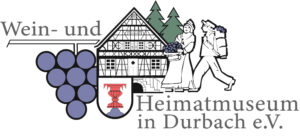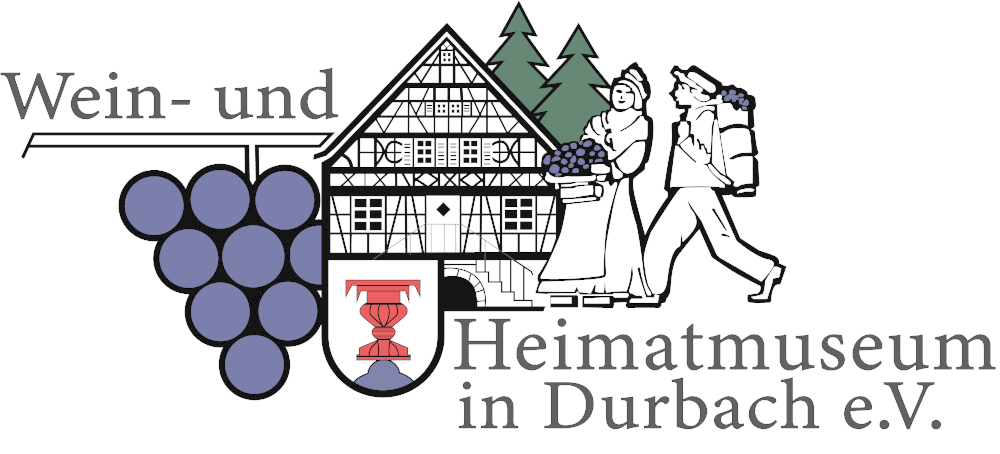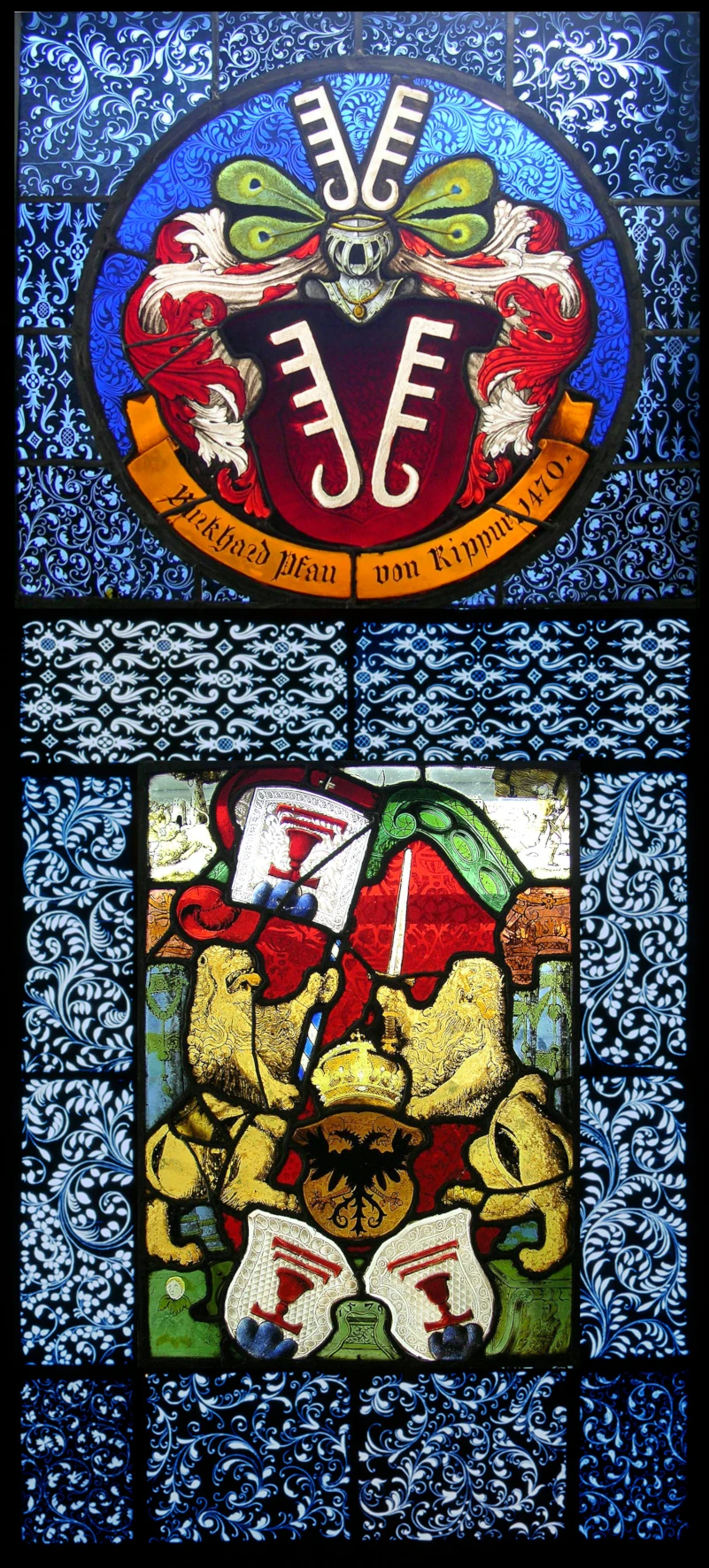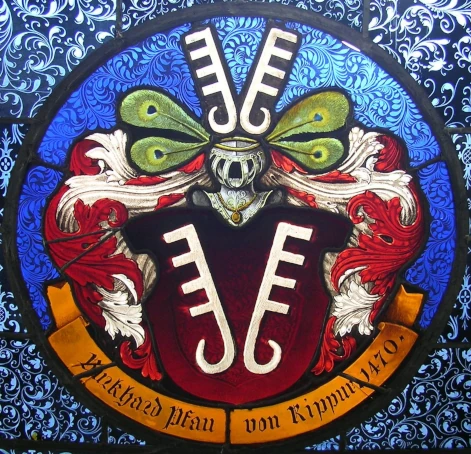265 Staufenberg Castle Window 5
Motif above: The Pfau von Rippur (Rüppurr) family joined the Staufenberger Ganerbschaft at the beginning of the 15th century. An alliance coat of arms of the Pfau von Rüppurr and Bock von Staufenberg can be seen on the archway of Staufenberg Castle. Inscription: “Burkhard Pfau von Rippur 1470″
Motif below:The imperial coat of arms (double-headed eagle, Habsburg) with the crown above is held by lions. One lion holds a sword, the other a standard with the Staufenberg coat of arms. Below the imperial coat of arms are two more Staufenberg coats of arms and the year 1579. Headpiece: The biblical motif of Samson with the lion and the city gates.
Motif above: The Staufenberg families of the Pfau von Rippur, unlike the other Staufenberg families, always kept their own coat of arms, in red and on the helmet above a green wreath two turned silver wooden keys with the beards pointing upwards.
The other Staufenberg canons seem to have been reluctant to accept the intruder and his descendants. A feud soon ensued, as a result of which Siegfried and Burkhart Pfau von Rüppurr sought the protection of the Elector Palatine in 1446. For a time, the Pfau von Rüppurr family dominated Staufenberg with 3 ½ shares, until they were finally replaced by the Wiedergrün von Staufenberg family. The Staufenberg branch of the family died out before the end of the 16th century.
The district of Karlsruhe-Rüppurr was the ancestral seat of the noble family of the Peacocks of Rüppurr, who resided there until 1584. At the beginning of its existence in 1103, Rüppurr still bore the name Rietburg, which in turn can be derived from the words Ried or swamp. Towards the end of the 13th century, historical sources refer to a castle as well as an Oberrüppurr and Unterrüppurr.
Motif below: The Staufenberg coat of arms is the coat of arms of the Wiedergrün von Staufenberg family. The disc was probably commissioned by Melchior Wiedergrün von Staufenberg, who was still alive at the time. The original disc measures 42 x 20 cm.
The double-headed eagle in connection with the Staufenberg coat of arms is somewhat surprising. In the late Middle Ages, the double-headed eagle was introduced as a distinguishing feature between the royal and imperial dignities: The king, who was elected by the electors, only became emperor after being blessed and crowned by the Pope in Rome. Only then was he authorised to use the double-headed eagle as a symbol of the universal claim to rule over Latin Christendom. Since the imperial dignity was conferred on members of the Habsburg dynasty almost continuously from the 16th century onwards, the Habsburg emperors bore the imperial double-headed eagle with a heart shield showing the coats of arms of their countries.
The disc is similar to the coat of arms of Lucerne, which also had a trefoil of Lucerne/Reich with a crown until the 17th century. Lions with orb and sword also served as shield holders. The disc is almost identical to a Bernese standard disc by the artist Carl von Egeri, dating from 1554. The disc in the Bernisches Historisches Museum has fairly identical lions as shield holders with sword and banner, as well as the imperial coat of arms with the double-headed eagle and the crown. Instead of the Bernese bear on the flag and the coat of arms below the imperial eagle, the Staufenberg disc features Wiedergrün’s chalices on a trefoil and the two godfathers. It can therefore be assumed that the Staufenberg disc comes from the same workshop of Carl von Egeri.
The figure of “Samson (Samson) with the lion” in the headpiece of the disc is taken from the Samson cycle in the Bible in the Book of Judges. Samson lived at a time when the Israelites were oppressed by the Philistines. In early Christian and medieval art, Samson’s fight with the lion is a popular image of Christ defeating death in the form of a lion and at the same time an allegory of strength.




